Maker Interview: The Infinitone and the notes between the notes
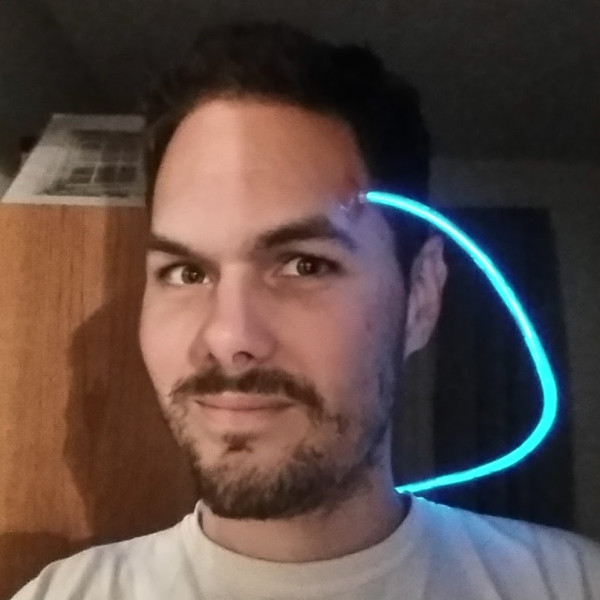
2 years ago
Music is widely considered to be a freeing experience of self-expression. But you may be surprised to learn that the twelve musical tones that shape our very understanding of Western music today is extremely narrow. Most musicians today are actually creating songs using a very limited number of notes when far more are potentially possible. In reality, there’s an infinite spectrum of tones beyond what you’ll find in musical textbooks. This space is where you’ll find microtones, the notes between the notes.
Most music we hear today relies on semitones: the smallest interval in classical Western music. There are twelve semitones in every octave and they make up just about all the music we hear in the West today. The twelve semitones are a popular accepted standard but they’re by no means the only option.
Microtones are the other possible notes in between the popular notes we know. In the dictionary, microtone is defined as “an interval smaller than a semitone”. This is the new world for musical exploration the Infinitone hopes to bring to enthusiasts everywhere.
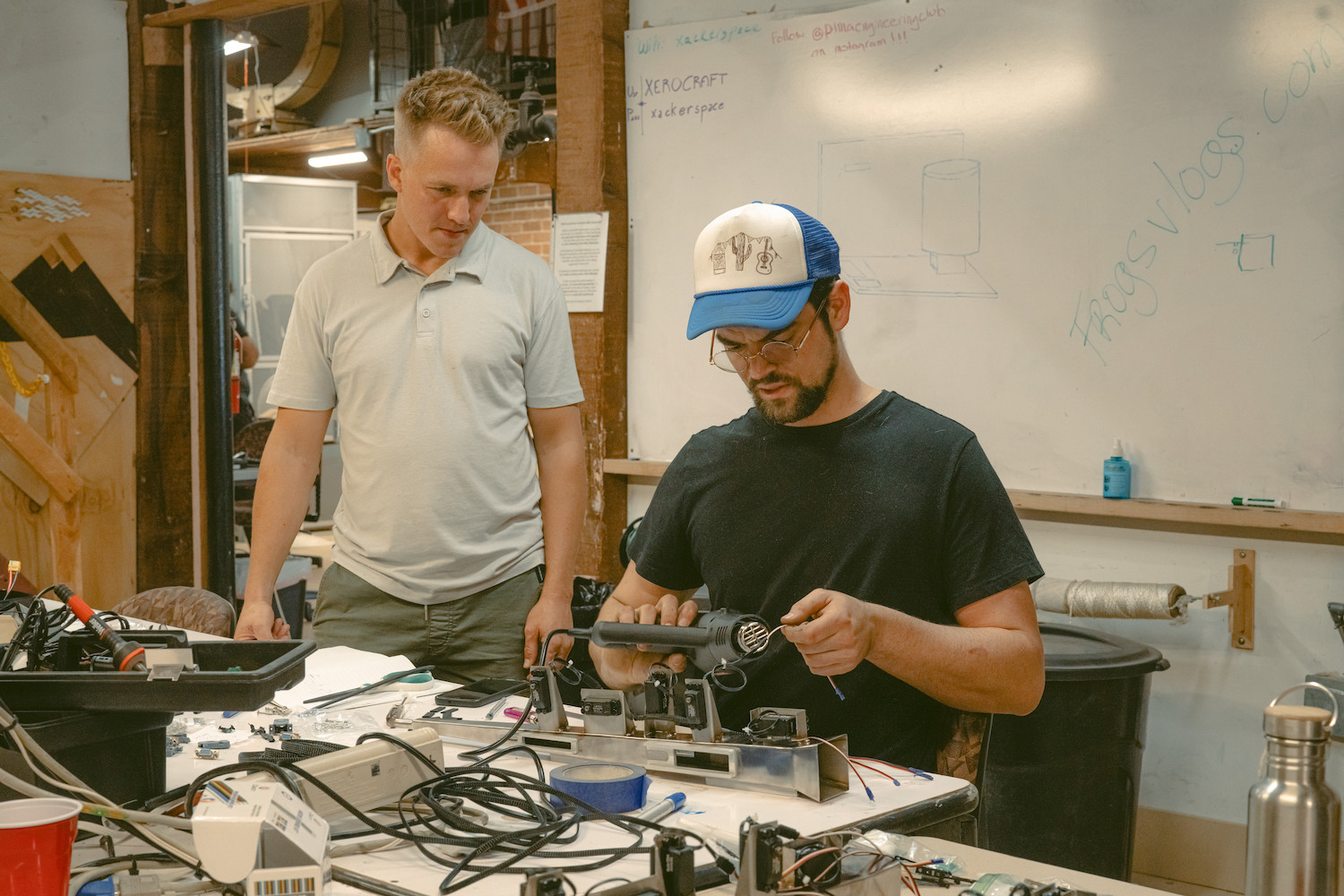
The Infinitone is the invention of musician and maker Subhraag and Xerocraft member Robert. It came about due to Subhraag’s need to access a wider palette of musical tones. His Infinitone is a conceptual design for a new form of wind instrument precisely controlled by computers.
Like a lot of Xerocraft members, Robert has been building things his entire life. “I like to make things. I've been doing it since I was a little kid; not very well, but certainly for a long time. Little things… my dad would have me help when he was cutting 2x4s to make like a ramada or something out back.”
“I think the thing that got me into making things very seriously was both musical instruments and book binding. When I was in college I did a short apprenticeship as a craft book binder. It didn't pan out ultimately as a career but I learned a lot of very valuable skills and how to use different hand tools and things.”
Robert’s had an impressive list of past jobs: music teacher, steel fabricator, choir director, foundry worker, and a years as a machinist repairing hydraulic equipment for big mining equipment. Currently, he’s a professional sculptor and metalcaster in a bronze foundry. “So making things is what I do daily.”
Like Robert, Subhraag has always enjoyed working with his hands. “Since I was a boy I've always just been tinkering around and made stuff… Made Legos and made school projects and videos… One of my first loves was performance art magic…and so I was very interested in using my hands and performing. And sometimes I would invent tricks and things like that. So from early on I was just kind of interested in how things work and how things go together and how to combine technology with art, with performance art.”
So what is the Infinitone? “It's like a saxophone of the future,” Subhraag explains. “The reason why I built it was absolutely out of necessity. I was a saxophone player and I absolutely love playing saxophone; it's my passion and my life and the thing that I do best, but I was getting just really bored with it…I just felt that there was something more to be done as a woodwind player…I wondered if there was more music inside of me that I just couldn't get out of the saxophone and I wanted to be able to share this music with the world and the only way to be able to do that was to actually build this instrument.”
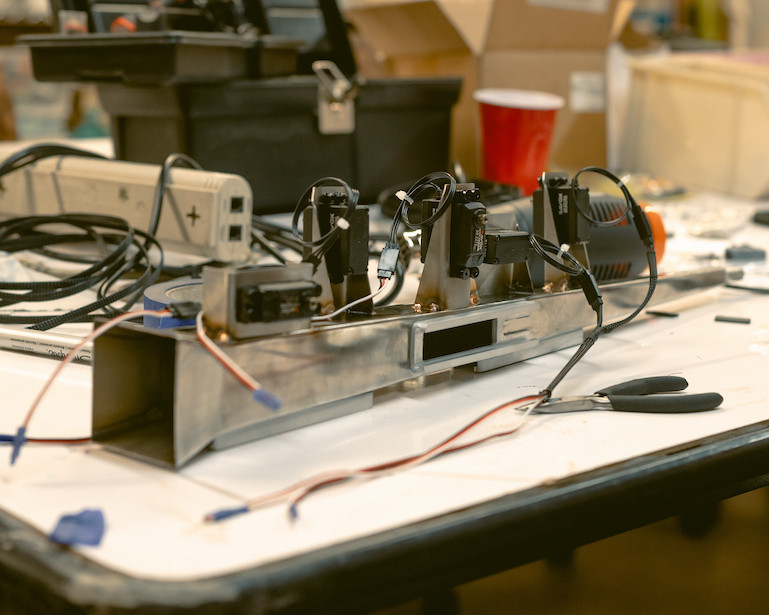
“Standard instruments have the twelve tone scale and that's kind of like giving a painter twelve colors. So imagine Picasso or Van Gogh or Dali painting with twelve colors and that's all you get. So that's what modern musicians are stuck with these days in a lot of ways.” Subhraag laments.
“It's a saxophone - sort of,” is how Robert explains the invention. “It's a saxophone in the sense that it's actuated by a [single] reed that you blow into…it has a largely conical shape, and it's made of metal and so it sounds like a saxophone…That's where the similarities end…”
It's a saxophone - sort of
Instead of that signature round, curvy brass instrument we all recognize, this one’s made of four straight steel panels. Though it bears little physical resemblance to the instrument it’s replicating, the makers chose this design for a couple simple reasons: it’s easy and cheap to fabricate while remaining acoustically very similar to a real saxophone and it makes the high-precision electronic components that will control it easy to attach. To alter the tone, the electronics operate five slides on the side of the instrument, rather than several holes that are covered on a saxophone.
“…the other huge difference is that instead of pressing keys you use a MIDI controller to control the position of slides that open up different areas of the panels so it's kind of like a combination saxophone/slide whistle,” explains Robert.
Inventor Subhraag further explains, “The concept is kind of like a trombone, where a [player] will move a slide. The longer the slide, the lower the note.”
Slides are easier to control mechanically than traditional saxophone holes. And to make the first version of the Infinitone saxophone more compact, Subhraag broke the “slide” concept for tone changing into five smaller individual slides, each independently controlled by the computer to achieve incredibly precise tones.
“If I were to put a slide on the saxophone it would be far too long. So what I decided to do is break it up into five pieces so that there's five separate slides. That altogether creates one long sliding so it basically changes the length of the instrument.” Subhraag says.
Each slide is connected to a high-precision stepper motor typically found in acrobatic hobby helicopters that moves the slider up and down quickly and precisely. It’s these precise, replicable movements that are the key to accessing microtones. And the Arduino microcontroller that drives the motors is capable of replicating predefined tones over and over again, negating the musician’s need to memorize them.
“The slides give you precise access to frequencies,” Subhraag explains. “The slides open and shut and they basically expose more of the bore to the air, which is a lot like pressing more and more keys on a saxophone, which gives you different pitches. You have very fine control because the motors can put them at basically any position, within less than a millimeter.”
“You can access any pitch,” Robert says. “Those are the microtones - it's the notes between the notes. You know, you can access more than the twelve notes on the piano but it's tricky and a lot of times it's not on purpose. On this instrument, everything is very tightly controlled.”
Those are the microtones - it's the notes between the notes
Of course, the idea of microtones is nothing new. “Most instruments are microtonal in some sense,” Subhraag says. “Even the saxophone's microtonal. You bend the notes up and down; you're constantly adjusting things. Every culture around the world has different tuning and different tuning systems.“
The challenge is in the access and replication of these unusual tones. Subhraag explains, “There's all kinds of new harmonic and melodic color palettes that you can get if you increase the precision of what you're doing. So what the Infinitone does is, without practice, I can instantly access any frequency or any tone or any tonal relationship. The access is what's new.”
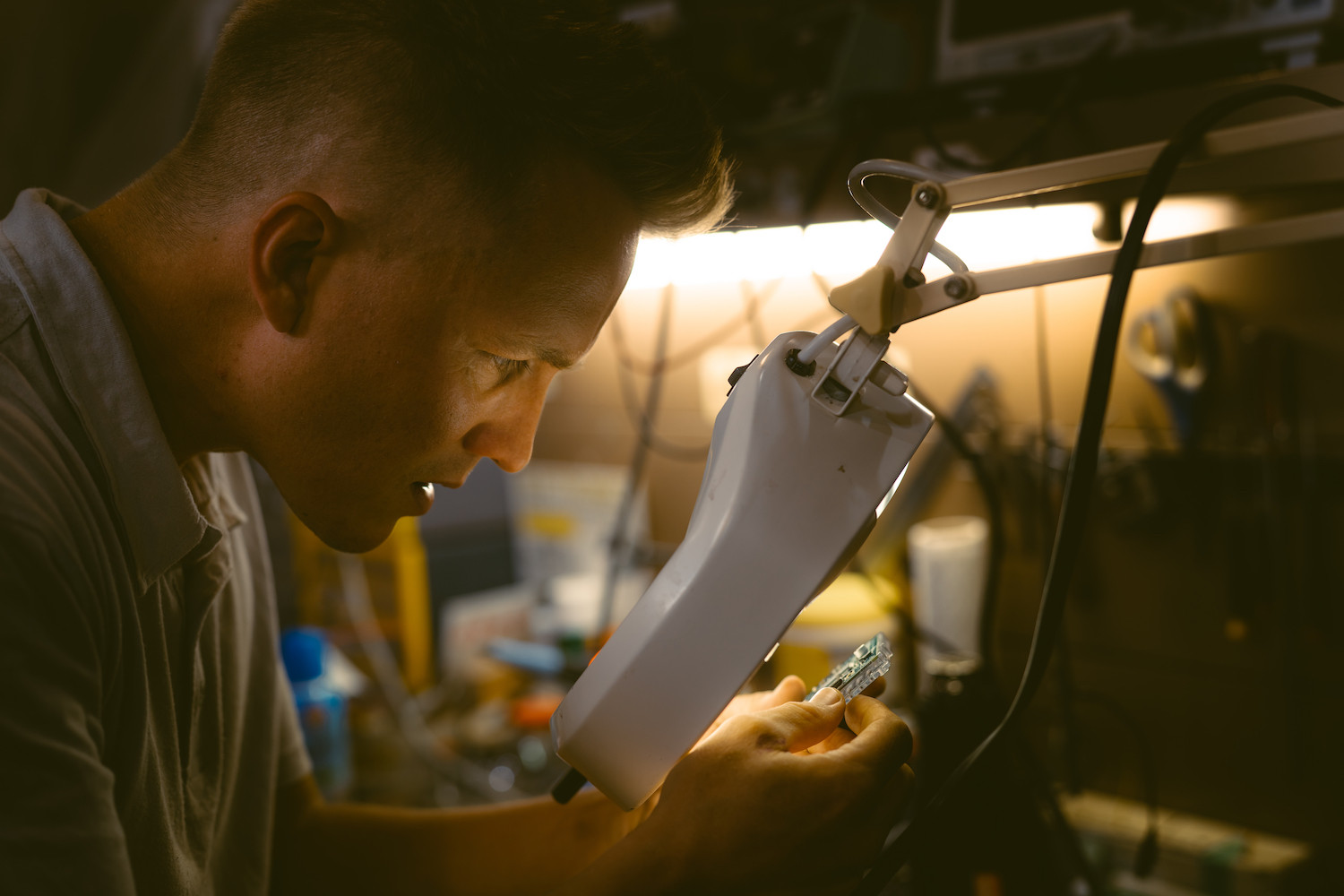
Subhraag built version one of his Infinitone himself. He did that despite lacking the knowledge necessary to build what he was imagining.
Robert tells the tale of Infinitone, the alpha version: “He made this instrument by hand out of brass and solder with no metal working experience in, like 2016, 2017 because he had this vision for it; of what he wanted to do, which was to play his saxophone to access microtonal music.” Subhraag agreed that he had to push through his lack of experience with metalwork. “It was a very, very long, arduous, difficult process because I had no experience with metalwork or making instruments or anything like that, but general experience with my hands.”
Eventually, Subhraag hacked together a rough proof of concept of his idea. He admits it was very rough and he was chronically worried it would fall apart. Despite his terror at the thought of the instrument crumbling in his hands on stage, Subhraag entered the Infinitone in the 2017 Guthman New Musical Instrument Competition at Georgia Tech University, Atlanta. His performance won him the first prize. The acclaim helped convince Subhraag that there was merit to his idea and he continued to pursue it.
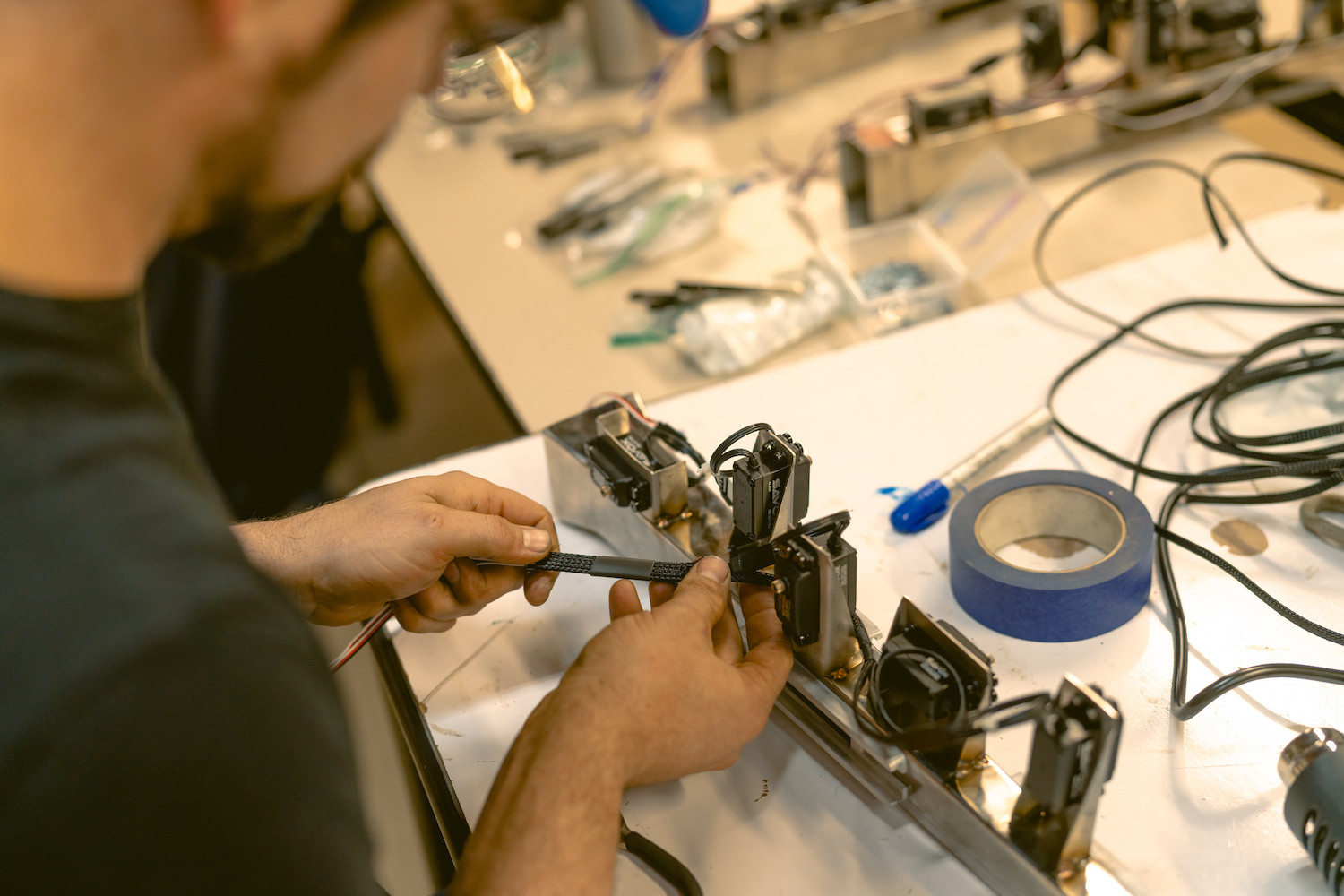
The saxophone-like instrument is certainly the business end but there’s a lot more going on. The Infinitone is an ambitious project. Besides the metalworking knowledge required to build the instrument, there was the knowledge required to connect the stepper motors to the slides, code the Arduino to operate them and interface to your computer, implement a MIDI keyboard to store and play the microtones, and a software plugin to operate the entire thing.
“You press the keys of the keyboard,” Robert explains, “and they cause the slides of the saxophone to open and shut to varying degrees. But the critical part is that the software makes it really easy to assign the keys of the MIDI keyboard to any pitches in any system that you choose.” Robert continues, “As a player you blow into the mouthpiece and you touch the keys on the MIDI keyboard and the sounds that you want come out”.
Robert’s engineering experience has brought the next Infinitone to life. But it’s Subhraag’s software programming knowledge that completes the invention. Subhraag wrote the plugin that operates the Infinitone saxophone, as well as any other similar invention that turns a musical instrument into a piece of CNC equipment. It’s called Infinitone DMT. DMT stands for Dynamic Micro-Tuning. The plugin’s user manual describes Infinitone DMT as “a powerful plugin and standalone that gives you freedom of pitch within the context of your normal musical workflow. With the “notes-between-the-notes” right at your fingertips, you can radically enhance the expressive range of your music in ways that were never before possible.” Subhraag pointed out the sheer breadth of what the plug-in is capable of. "[It] doesn't just work with these kinds of instruments, but also all digital and analog synthesizers so that all musicians producing music in a digital environment can get instant access to these new notes," he said.
Using the Infinitone DMT plugin, the user can organize any microtonal pitch, assign them to a key on the MIDI keyboard, and play them on the instrument. And there’s practically no limit to the number of tones you can get, as Robert explains. “You can divide up the octave in just an infinite number of ways - hence “Infinitone”.
“The problem was that there was no good software for composing and exploring new microtonal tunings,” Subhraag explains. Friends in the internet forum would reach out to him expressing their frustration over the lack of good microtonal software. “So I decided to come up with a software solution for that. And so that led to me creating what's called a “plug-in”. A plug-in is something that digital musicians use in their recording software to get new access to new features.” After finishing the plug-in, Subhraag released it on his website, infinitone.com for the benefit of musicians everywhere. His hope is that with this software, “Any musician who's producing music in a digital environment -which is almost every musician these days- can have easy access to these new microtonal possibilities.”
You can divide up the octave in just an infinite number of ways - hence “Infinitone”
Throughout Subhraag’s work on the Infinitone project, he was an active member of a niche internet forum for musicians interested in microtones. It was on this forum that Subhraag met Robert, a local maker living in Tucson. At the time the two started corresponding, Subhraag was living in Germany with his wife. And here’s a fascinating Tucson twist: though Subhraag is a Tucson native, born and raised, he did not meet Robert locally but instead on that niche internet forum. The two discussed the possibility of Subhraag’s new invention playing a musical piece written by Robert. After Subhraag expressed his anxiety about the integrity of his hacked instrument, Robert offered his experience as an engineer and metalworker to make a stronger version of the version one Infinitone. Subhraag agreed and Robert got to work.
This brought Robert to Xerocraft, where he used our space and tools to build his new version of the Infinitone. It’s taken about a year of hard work to get the Infinitone to its nearly completed state. Robert has really enjoyed his experience in the space.
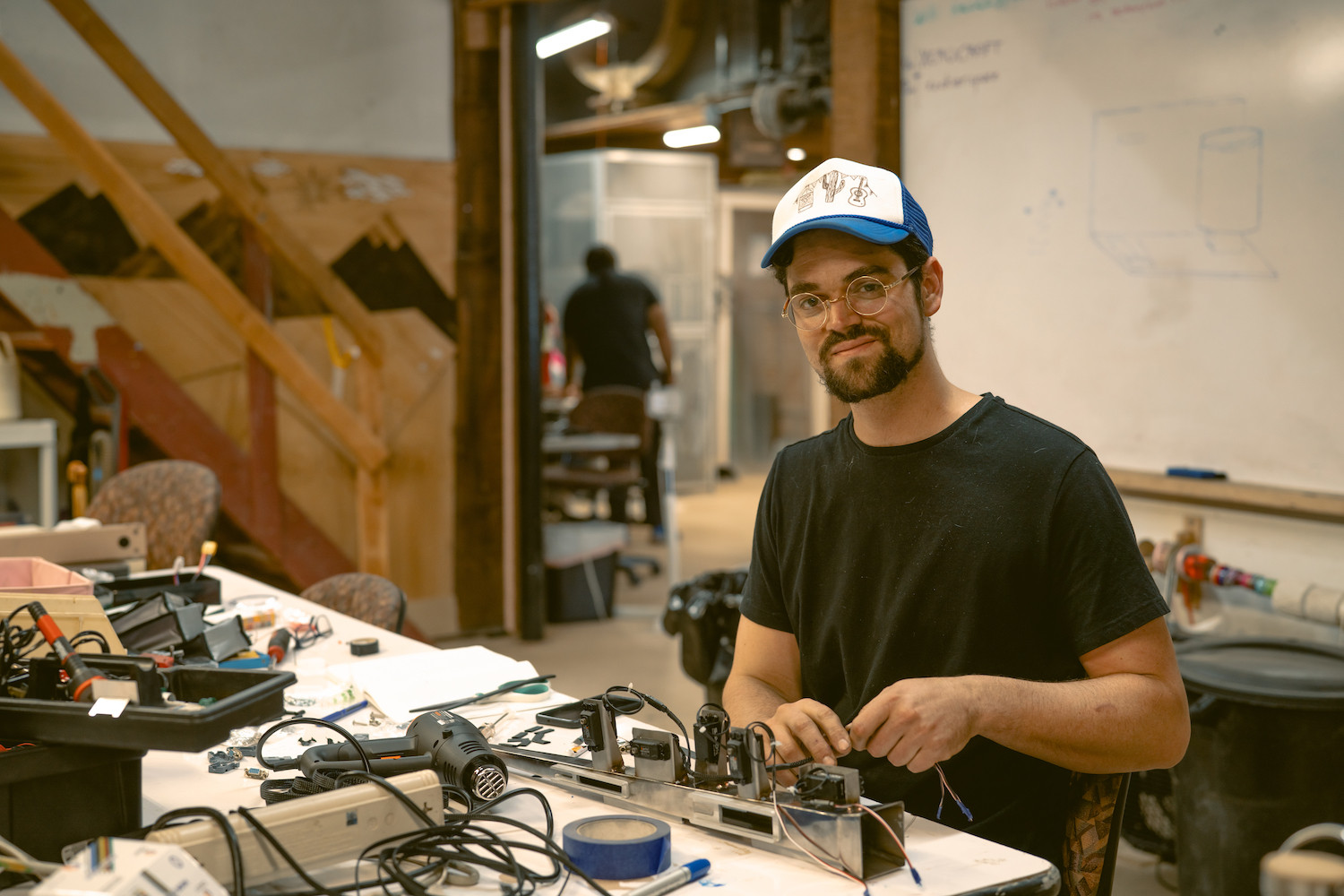
“I love Xerocraft. It was nice when I was going to school for machining that I got to use Pima's machine shop. It was nice when I worked in a machine shop that I got to use our machines. But I don't do either of those anymore…so I come here. I can use your precision equipment and I love that.”
Robert has made great progress on the construction of Subhraag’s new Infinitone, as well as three duplicates they’ve made for other musicians who expressed intense interest in getting an instrument of their own. And that’s in spite of the fact that the Infinitone wasn’t being advertised or even up for sale.
Having a space where we can sit together and have the tools that we need is just such an incredible experience and it's such fertile ground for innovation, and just fun!
On the day of our interview, Subhraag had flown in from Morocco to meet with Robert and put the finishing touches on their invention. Subhraag really enjoyed his time here and had some great things to say about Xerocraft along with a great point about makerspaces:
“I think what's really amazing about a place like this is the power of collaboration because I had this idea and I just made it by myself. And I have certain skills. I have the ability to come up with these ideas and prototype things but with my skills I can only take things so far. And I think for any project to really fully blossom and to fully mature and evolve, collaboration is almost always necessary. So…having a space where we can sit together and have the tools that we need is just such an incredible experience and it's such fertile ground for innovation, and just fun! I love sitting here just tinkering and soldering and discussing ideas and being here together in the same space.”
We thank Subhraag and Robert for their time and we hope Infinitone is a great success! If you want to learn more about the Infinitone, download the plugin, or contact the creators, visit infinitone.com.
**************************************************************************************************************************
Written by Jeremy Briddle for Xerocraft.org. Photographs by Jono Melamed.
**************************************************************************************************************************
If you missed our premiere episode of the Maker Interview Series featuring the Infinitone on Xerocraft's radio station, KMKR-LP 99.9FM, you can listen to the entire 28 minute episode with extended interviews of Subhraag and Robert on our podcast page.
For pictures of Subhraag and Robert's build day at Xerocraft, take a look at our photo album below.
To see and hear the Infinitone in action, check out Subhraag's solo musical work, Sirajanahar: